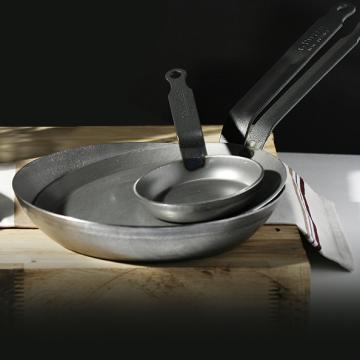
Guide for Cast Iron Pans
You ordered a new cast iron pan from our Butch shop, now holding the good piece in your hands and can't wait to try it out?
We know that feeling all too well! However, first, a really important note:
Please first inform yourself here in our magazine article about the necessary process of seasoning: “Seasoning cast iron pans – why & how“
You can also find a helpful video in the magazine under "Properly seasoning cast iron pans".
Seasoning before the first use of the pan is absolutely necessary! It won't work without it!









